May/June 2020 (Vol. 43, Number 11/12)
-
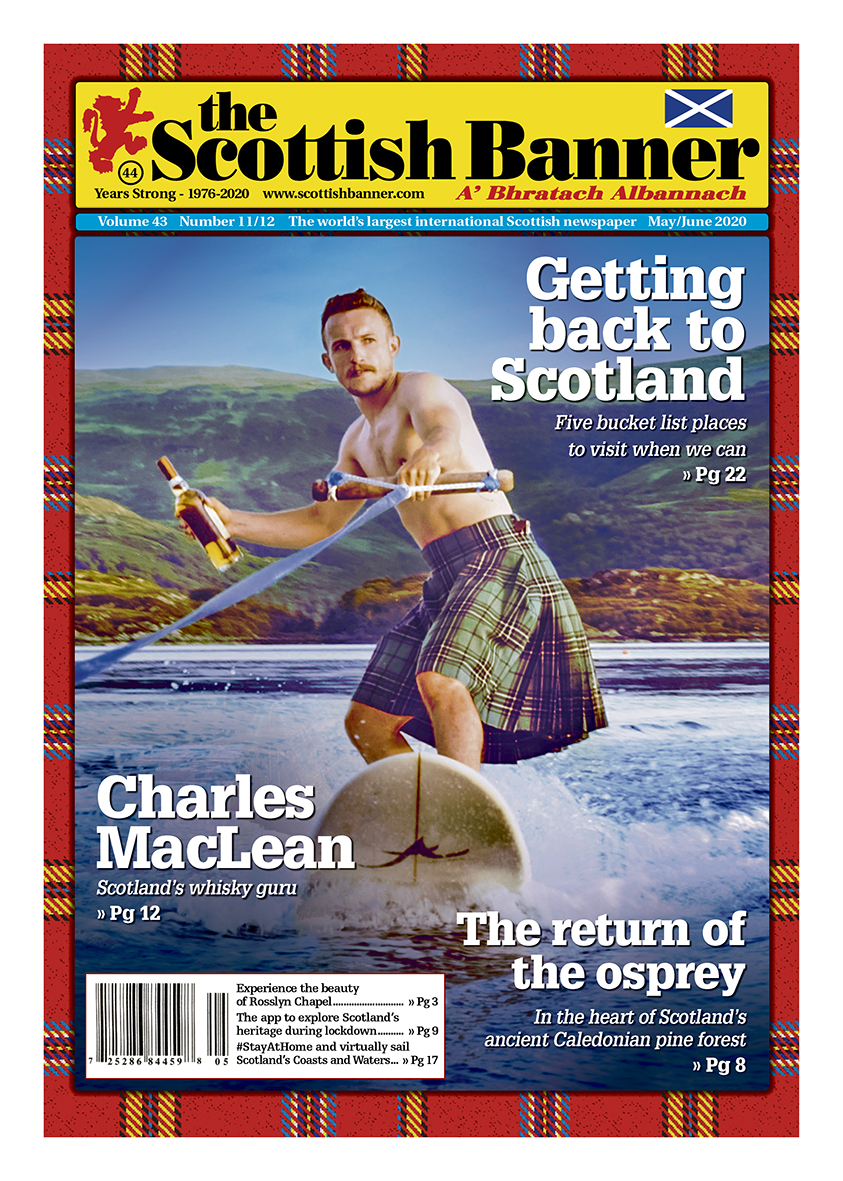
Gracing our front cover: Ewan MacLean from Team Broar celebrates Whisky Month. Photo courtesy of Lost Clock Productions.
The Banner Says…
Finding our ScotSpirit in challenging times
How so very much has changed since we released
the last edition of the Scottish Banner. Corona Virus
has spread across the globe and the impact to the Scottish community has been substantial worldwide with mass event cancellations. I am aware of the incredible hard work so many put in to run events such as Highland Games, Celtic festivals, concerts, Clan gatherings, just to name a few.
Scots are great at coming together at events, band practices, dance classes and more and currently this is not something that can happen. However, the
virus cannot stop people coming together in many other ways, with new virtual events popping up across the world in order to bring people together. Innovative communication ways have
been created by so many aspects of the Scottish community, all to keep people together, regardless the physical distance that may be taking place.
Our Scottish connection
It is this spirit we hope to celebrate in this issue, and I would love to hear from groups who have plans for more of this over the coming months. The virus may have thrown many of our plans in disarray, but it will not stop us from coming together and continuing to celebrate our love of Scotland. I am also very aware not all our readers are using social media or digital platforms to connect with the Scottish community, and may be feeling that bit more isolated from not only their own families but also their extended network of Scottish friends, or as some may feel extended family. Whilst some may be embracing technology more, I hope this issue helps in some small way to keep your connection to
Scotland alive, as now is not the time to visit Scotland or the various outlets we use to honour our Scottish connection.
As we navigate the incredible changes caused by Covid-19 and due to unprecedented Scottish/Celtic event cancellations this edition will be a May/June combined issue due
to a drastic decline in advertising. A few of the regular elements you will find in each issue are currently not running, such as our events page, and we are cutting some pages.
All of this is being done so the Scottish Banner comes through the other side of this. The next few months will be challenging but I do believe the Scottish Banner is needed
in the market now more than ever as people look for a distraction, some sense of normality and a way to importantly remain connected to Scotland for the many whose options have drastically changed.
Many readers receive each issue of the Scottish Banner kindly passed on by family or friends and that is always great to hear that so many get enjoyment from a single issue, however if those in a position to do so purchased their own copy this would greatly help us to keep producing our unique content.
In this issue
Another thing the virus cannot stop is the world’s love of whisky. May is Whisky Month in Scotland and though not all the celebrations that would normally occur are happening we are still celebrating the ‘water of life’ in this edition. We are so fortunate to speak with Charles MacLean, Scotland’s preeminent whisky expert. Charles has a vast knowledge and passion for not just whisky but Scotland itself. Regular readers will also know we featured his three world-record setting sons in our March edition and the chance to feature his oldest son, Ewan, on our cover could not be missed.
We know that now is not the time to plan travel to Scotland. I am sure many would have had plans to be hitting Scotland’s shores over the upcoming spring and summer months. Scotland will wait and be just as beautiful, historical and breathtaking when all this is over.
We have highlighted five bucket list places to visit when it is safe to do so. I know there are so many more and urge readers to send us some of the places they would recommend to
others to put on their bucket list for the next visit to Scotland.
One group who are currently welcome to visit Scotland are the ospreys at Loch Arkaig which have returned to the Caledonian pine forest to raise chicks. A sure sign that natural life and new life is continuing, as they call Scotland home for the summer. I have jumped
on the webcam and watched these magnificent birds nesting live in the glorious Scottish Highlands.
Whether it is watching osprey or perhaps learning some Scottish history, the pipes or delving into Scotland’s rich historic information and images, we have also compiled just some of the ways you can keep connected to Scotland just now without leaving your own home. Whilst it may not be the same as being there or attending the many Scottish events that have been put on hold for now, I hope it helps you enjoy your love of Scotland.
The power of Scottish culture
The world as we knew may be no longer what it was a couple of months ago, but the Scottish community has risen to the many challenges. One of the hardest of course has been the mass cancellation of events across the world, some of the world’s premier Scottish events have put the safety of participants and attendees first and made some tough choices, with many losing a great deal of money. When it is safe to do so, I hope all
of us support as much as possible these great cultural events and also the bands, dance groups and vendors who make a living out of being part of them.
This has to be the power of Scottish culture, the very celebration we all enjoy so much across the world in being Scots. The bands may not be playing, but the music lives on, the dancers may not be performing but the reels and jigs continue, and the Clans may not be gathering, but the historic links carry on.
Again, we welcome any news of what your Scottish group is doing to get through this challenging time. Share your initiative with us and help inspire others how they can remain connected with their Scottish connections and love of Scotland at:
www.scottishbanner.com/contact-us or email me.
I hope you and your families and friends are all safe and healthy, I look forward to when we can all physically gather together in ScotSpirit but know that regardless we are all finding ways to continue to celebrate our great culture.
In the meantime, for those lovers of whisky and perhaps a more timely sentiment than usual, raise a glass this month to good health- Slàinte mhath!
What innovative ways are you using to keep connected to your Scottish community? Do you have a bucket list place to visit in Scotland? Share with us the impact the Corona Virus is having on your Scottish connection, or have you any comments from the content in this month’s edition? Share your story with us by email, post, social media or at: www.scottishbanner.com/contact-us
#ScottishBanner, #TheBanner

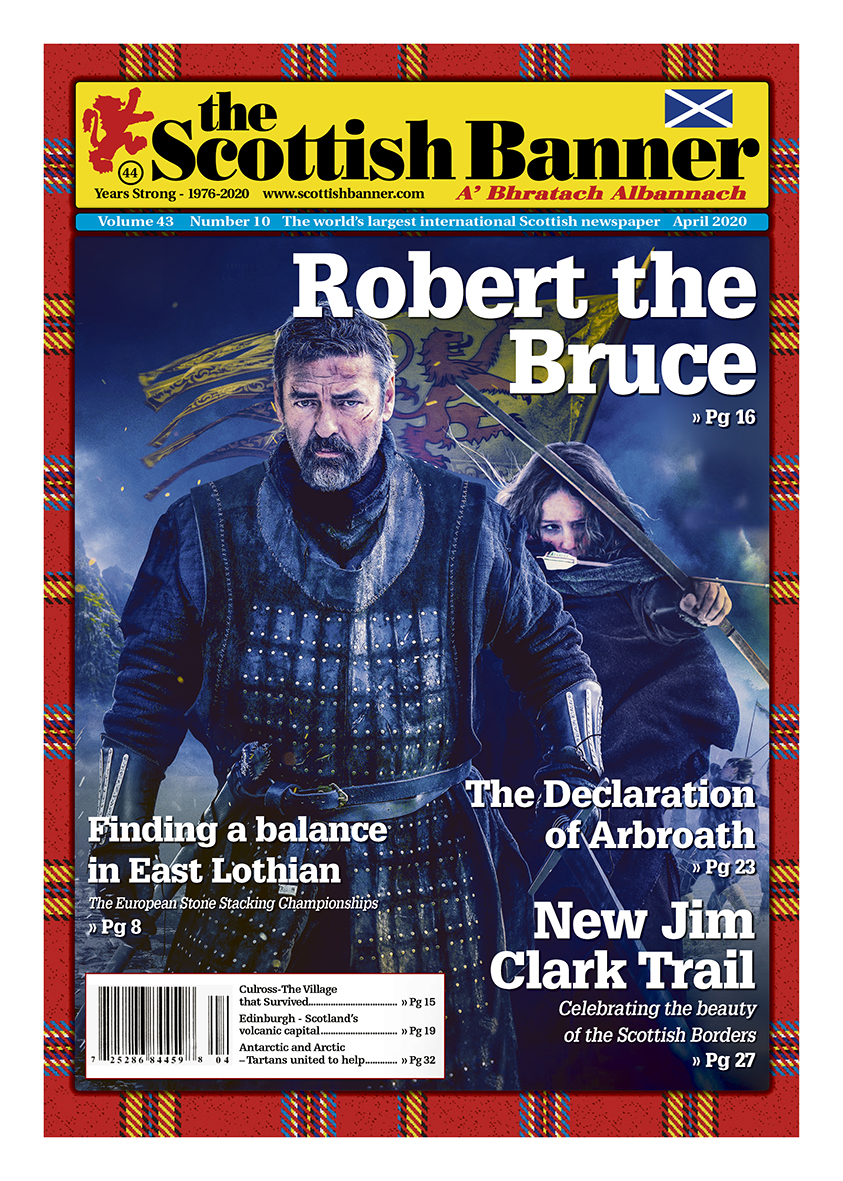
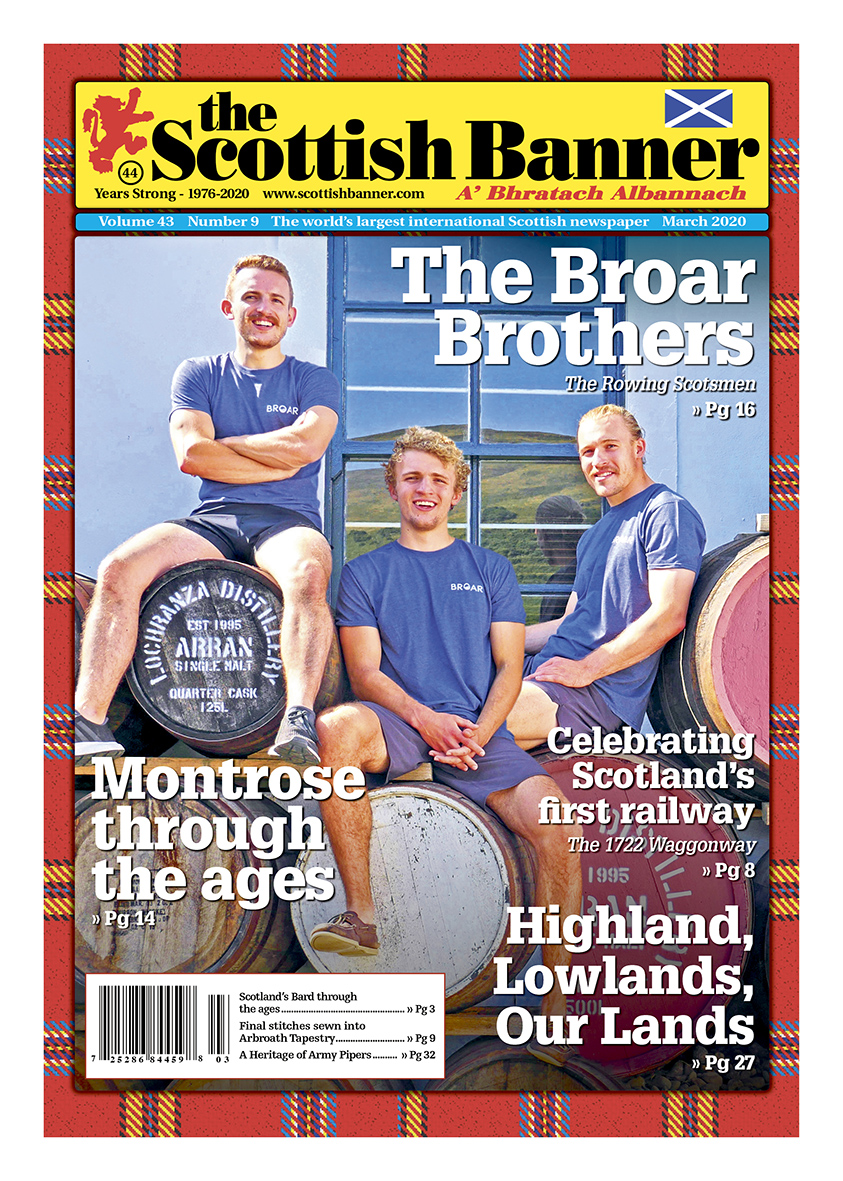
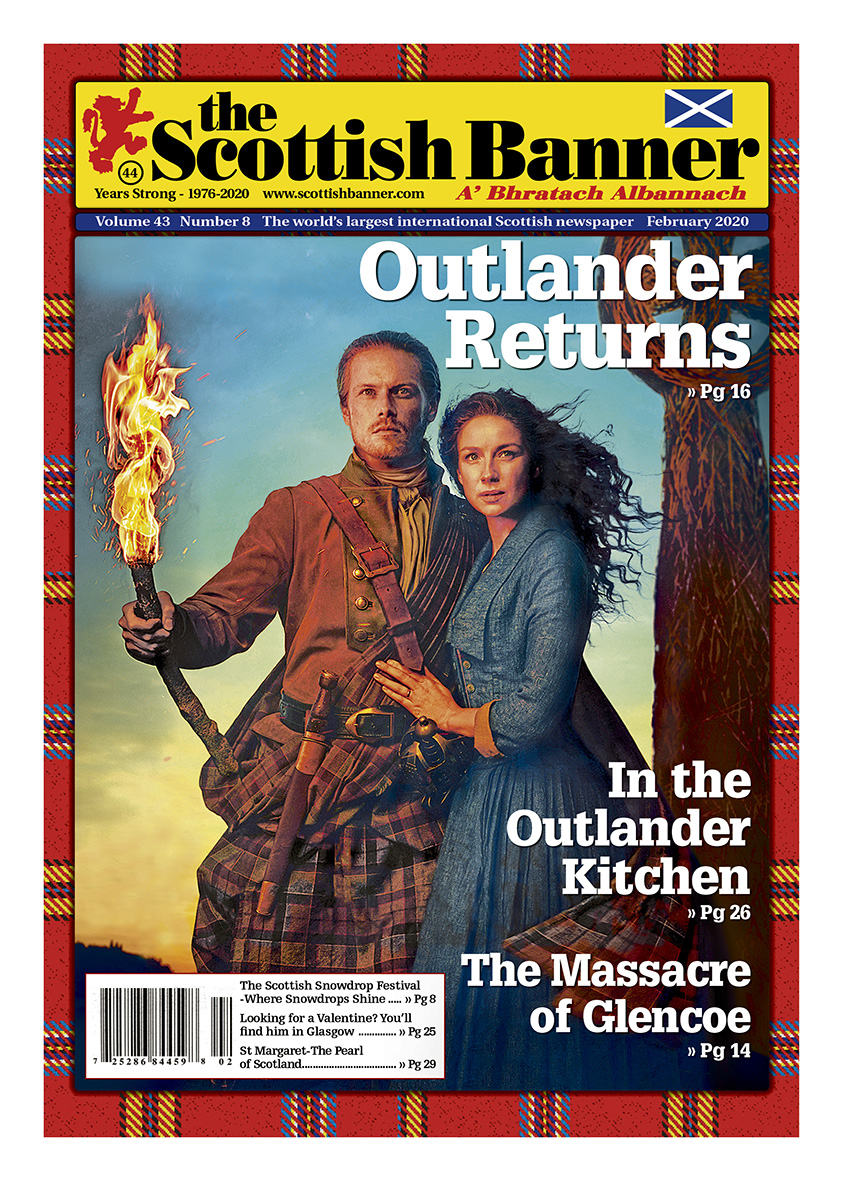
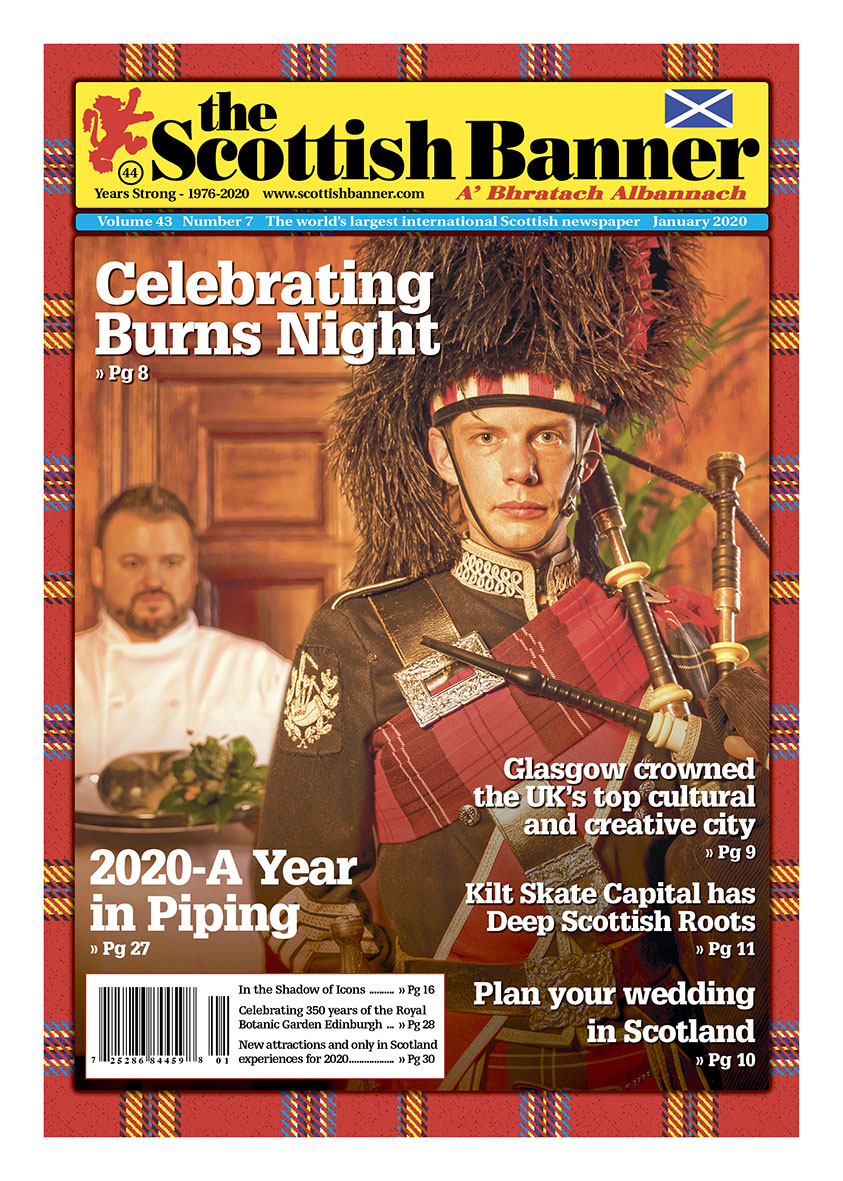
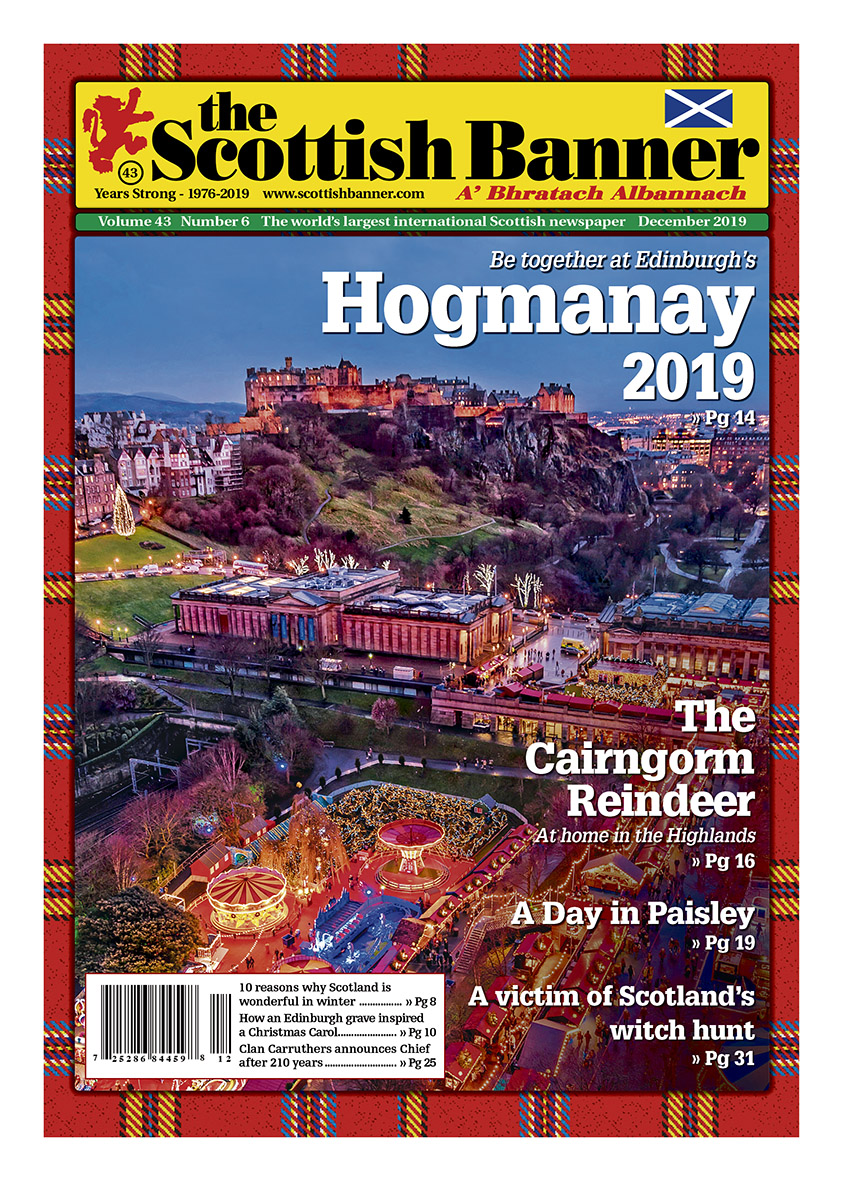
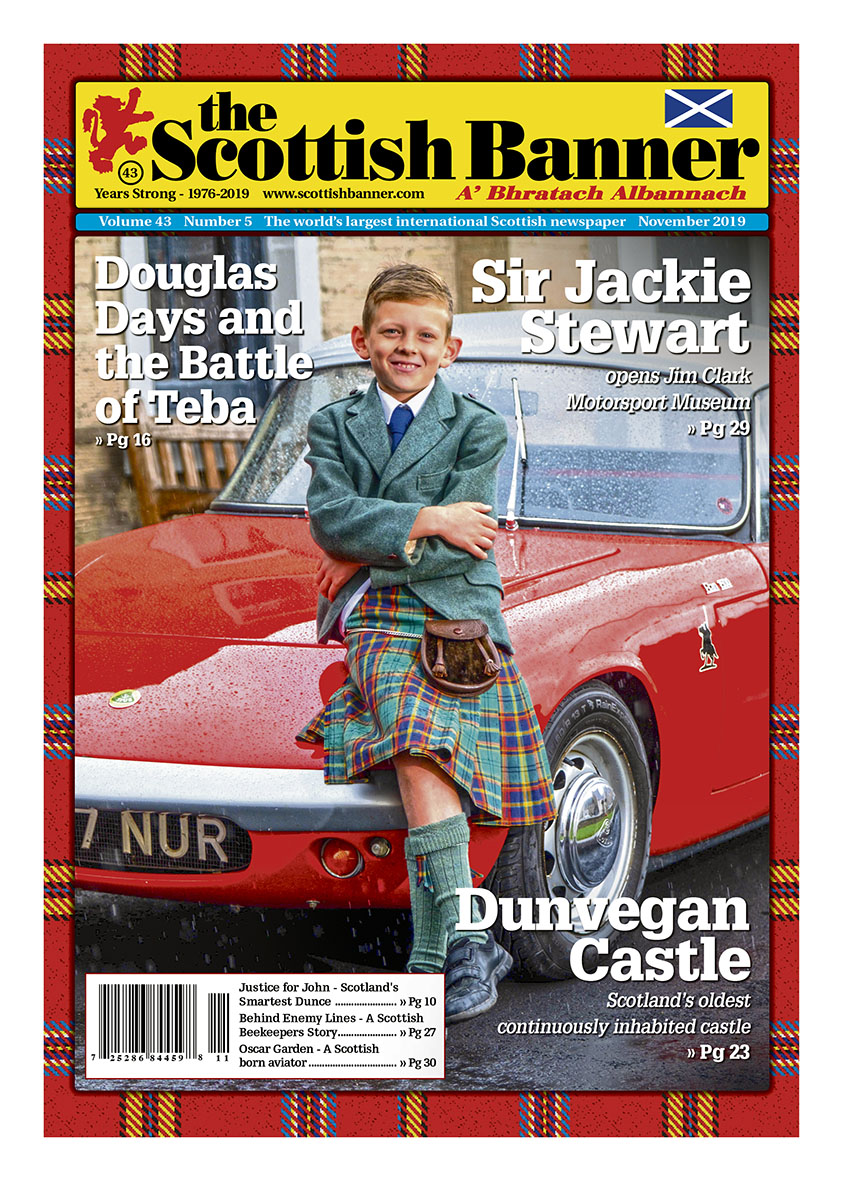
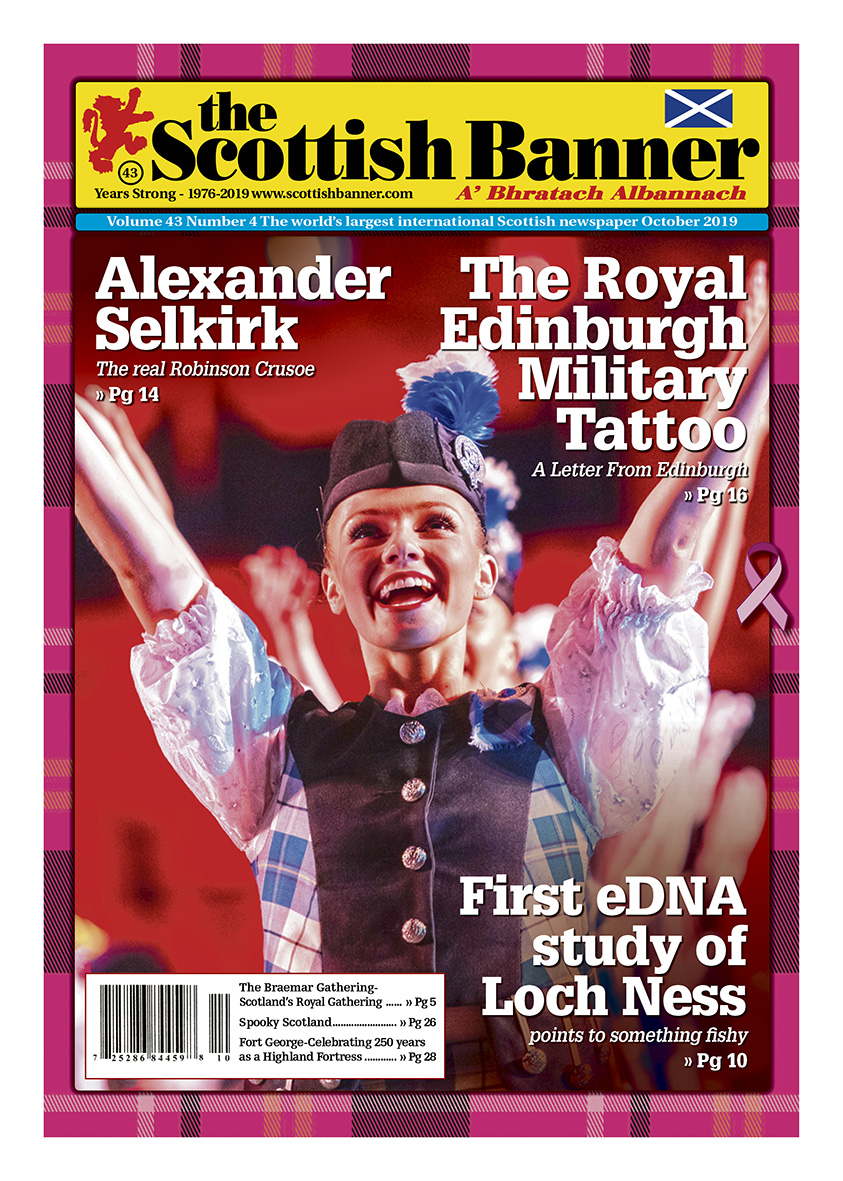
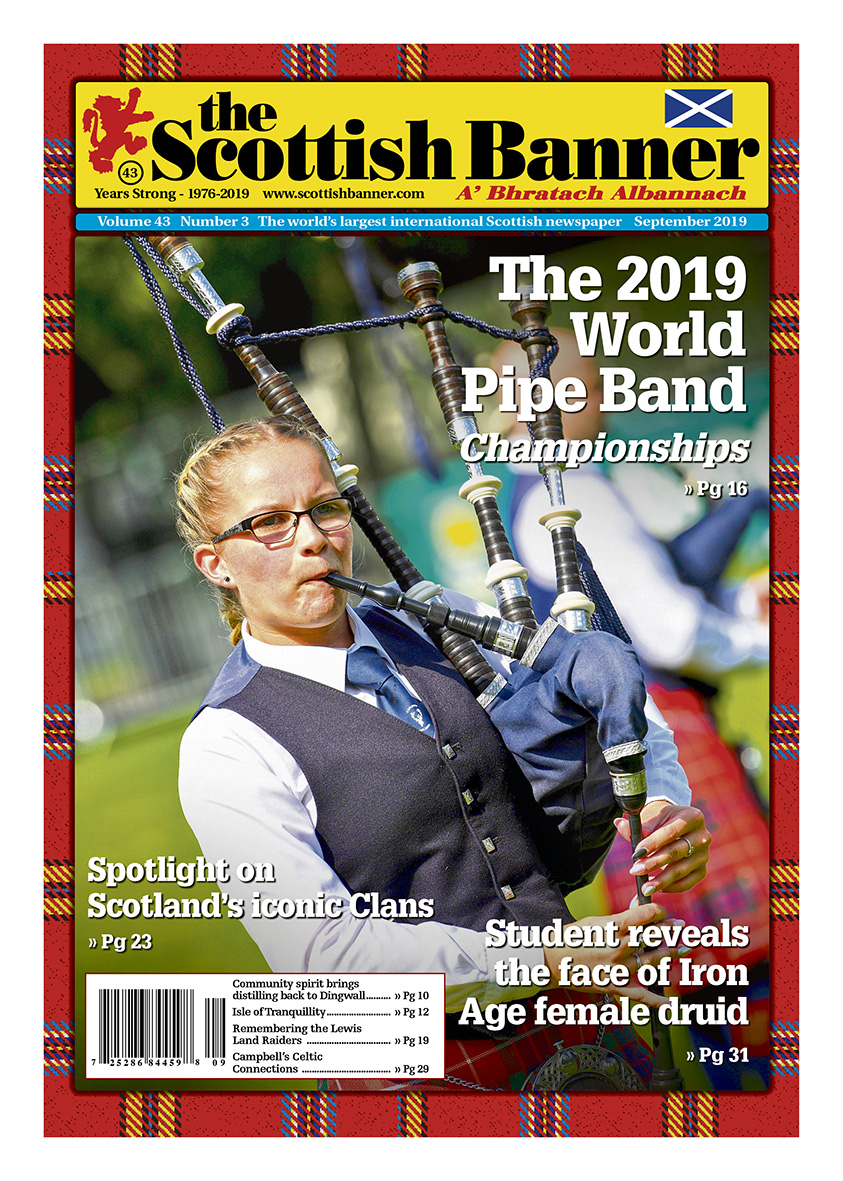
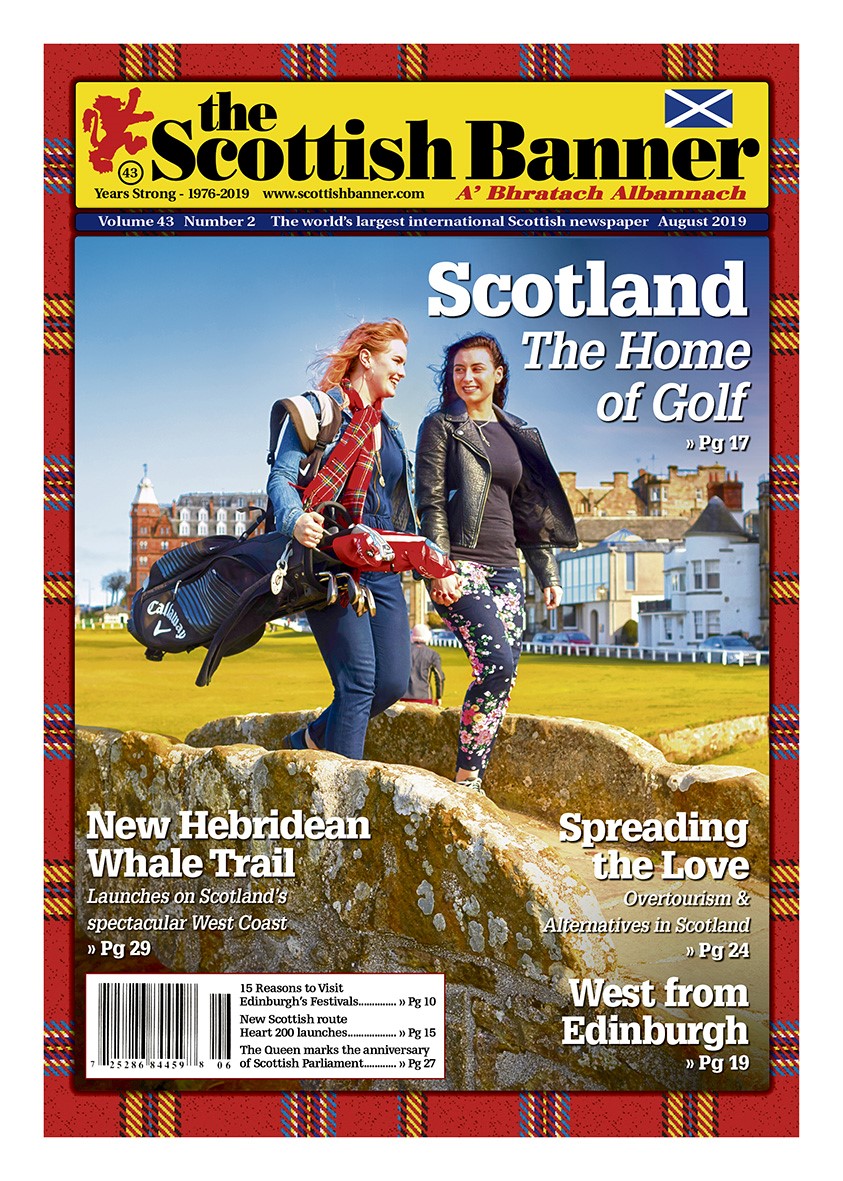
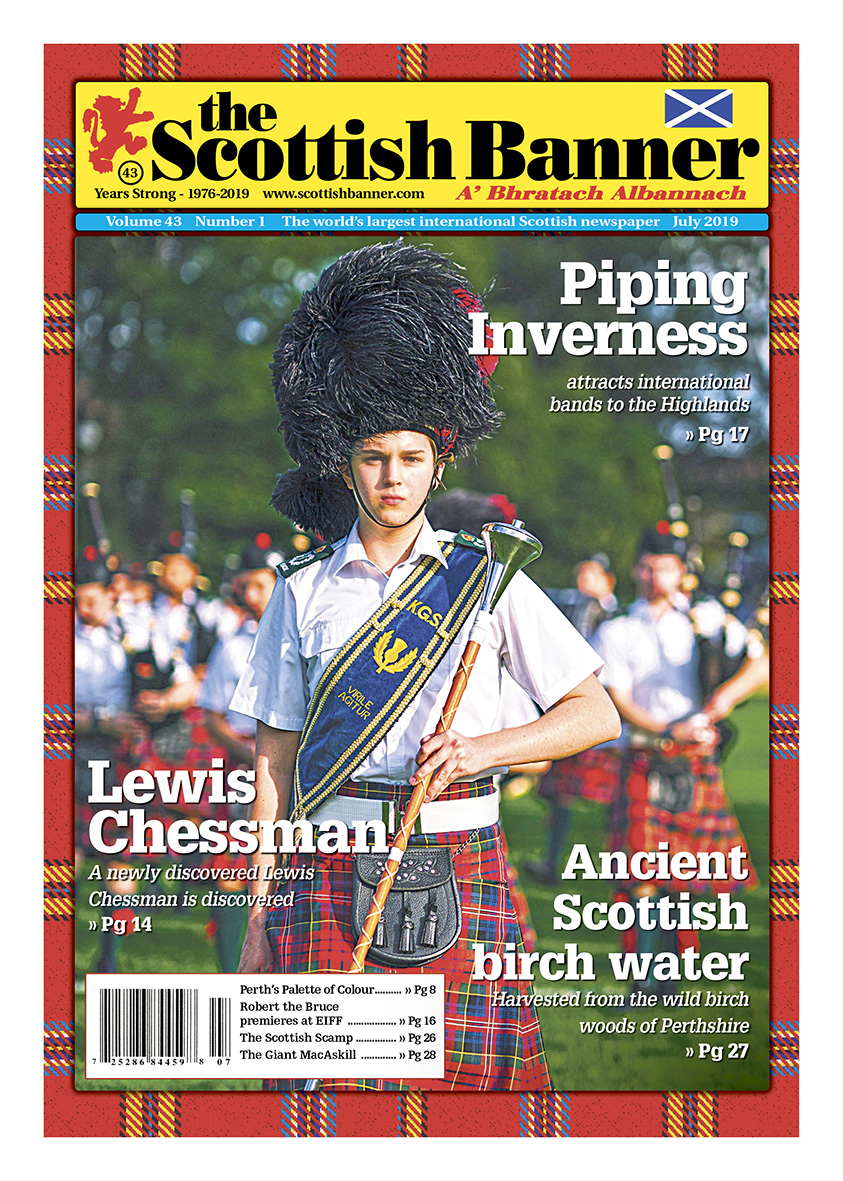
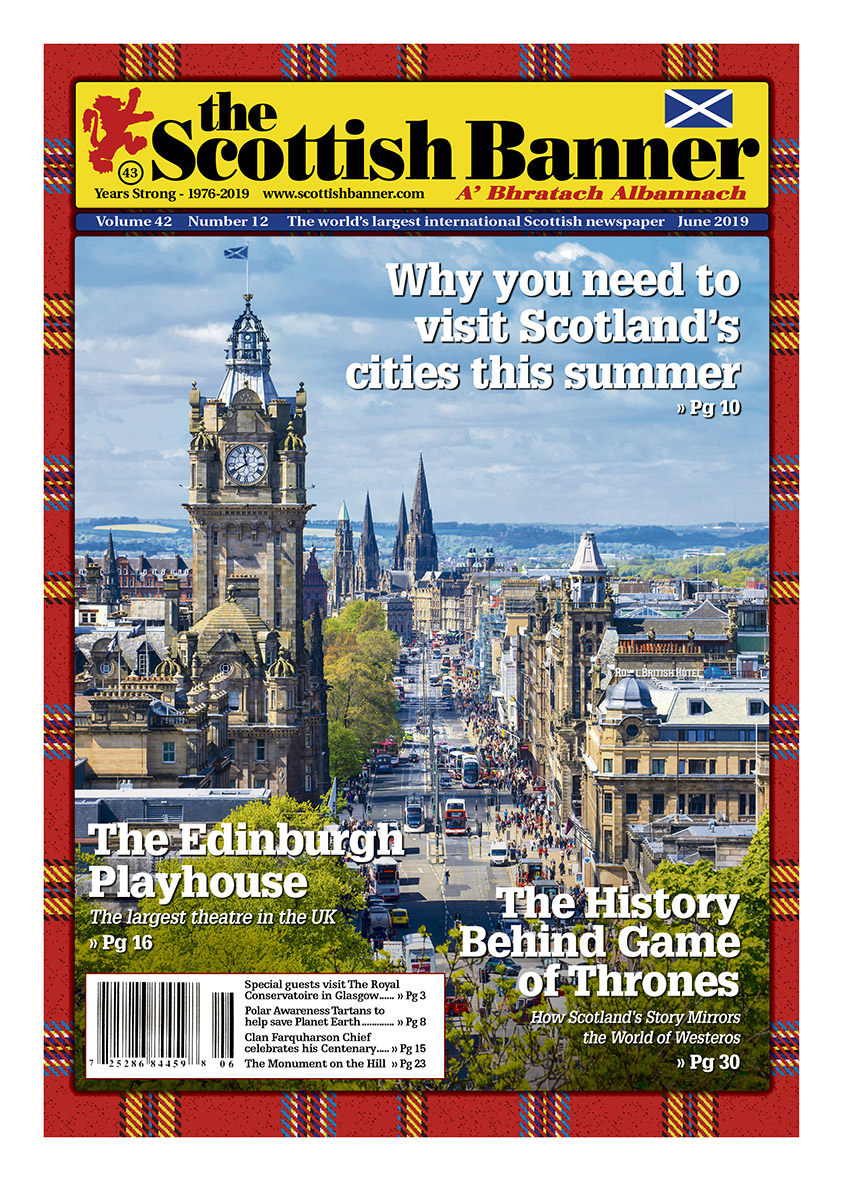
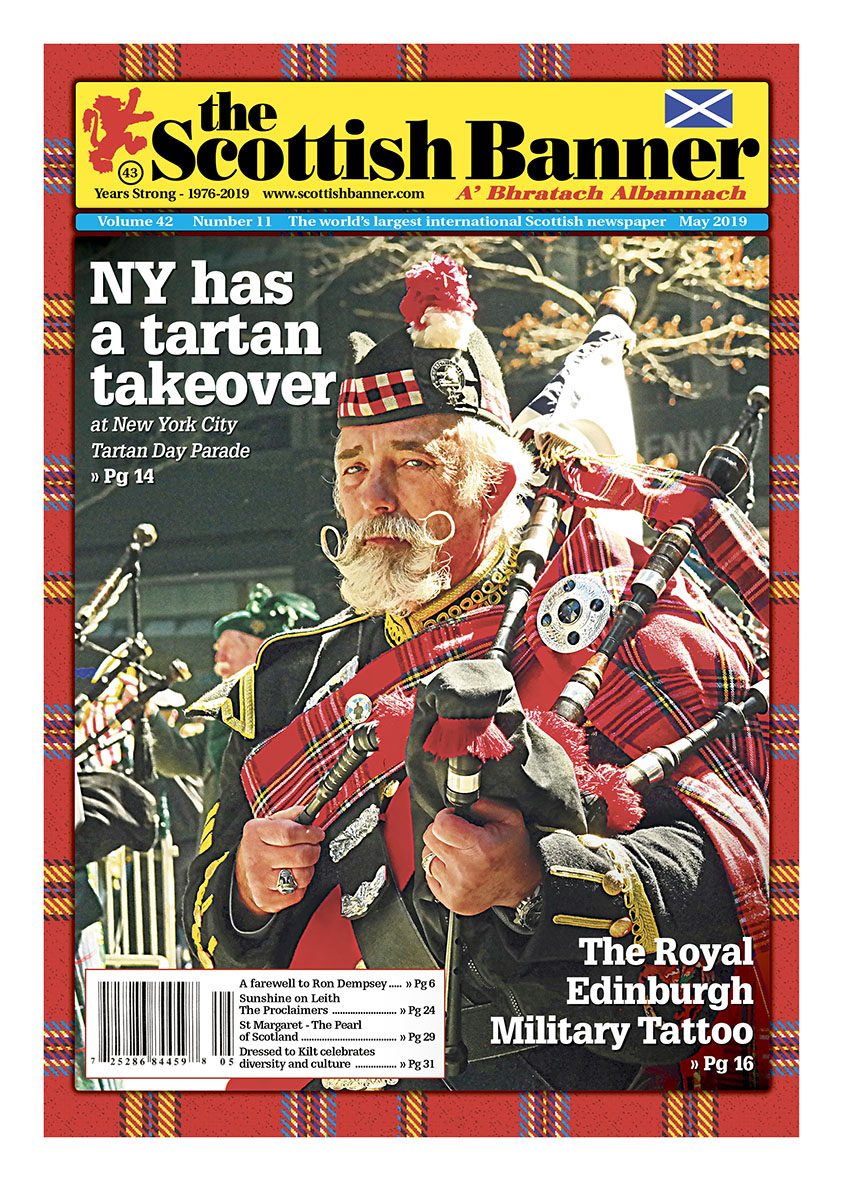
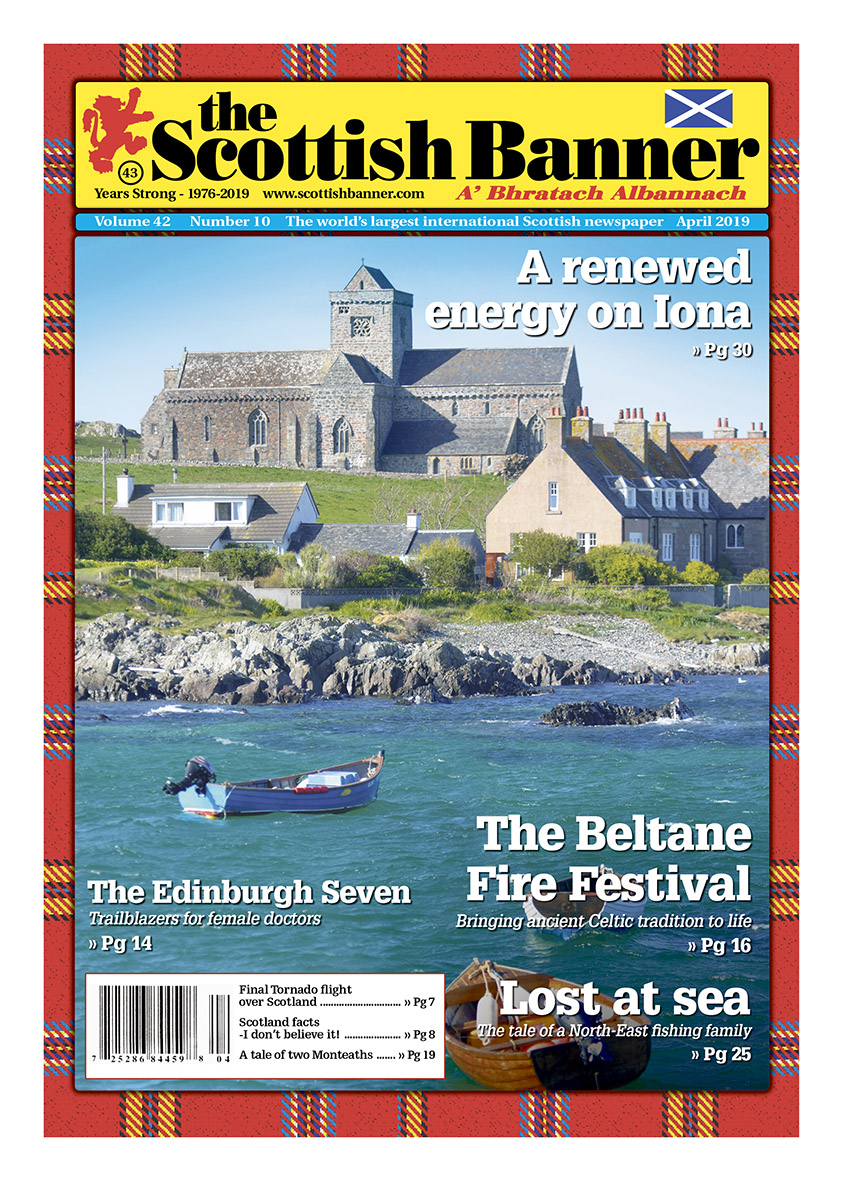
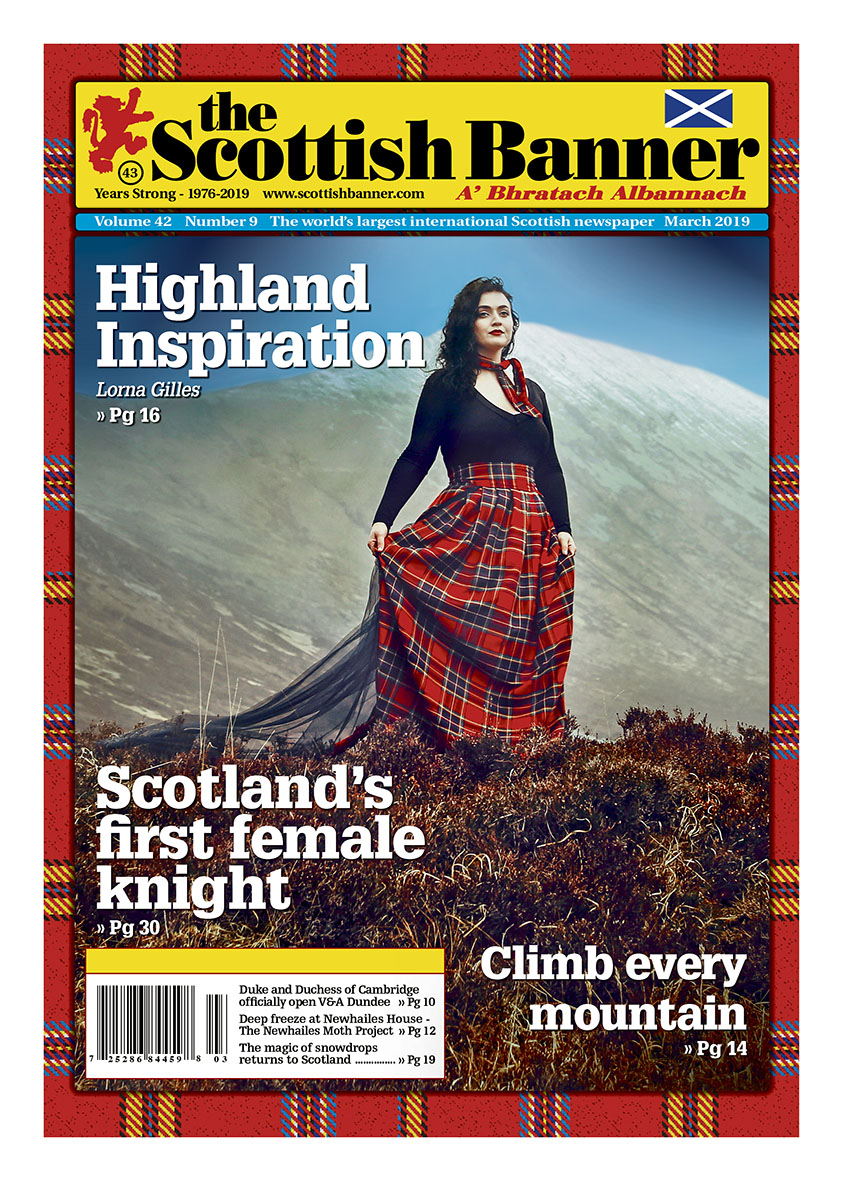
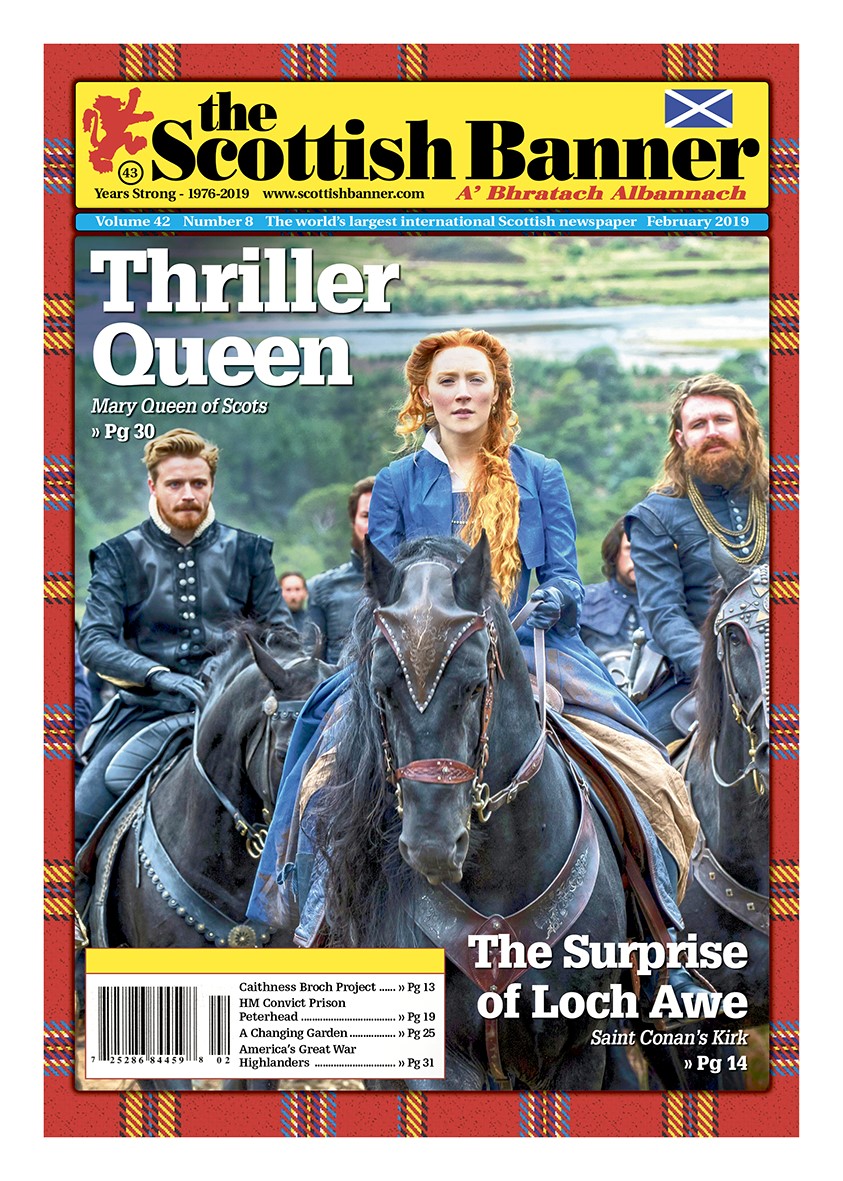
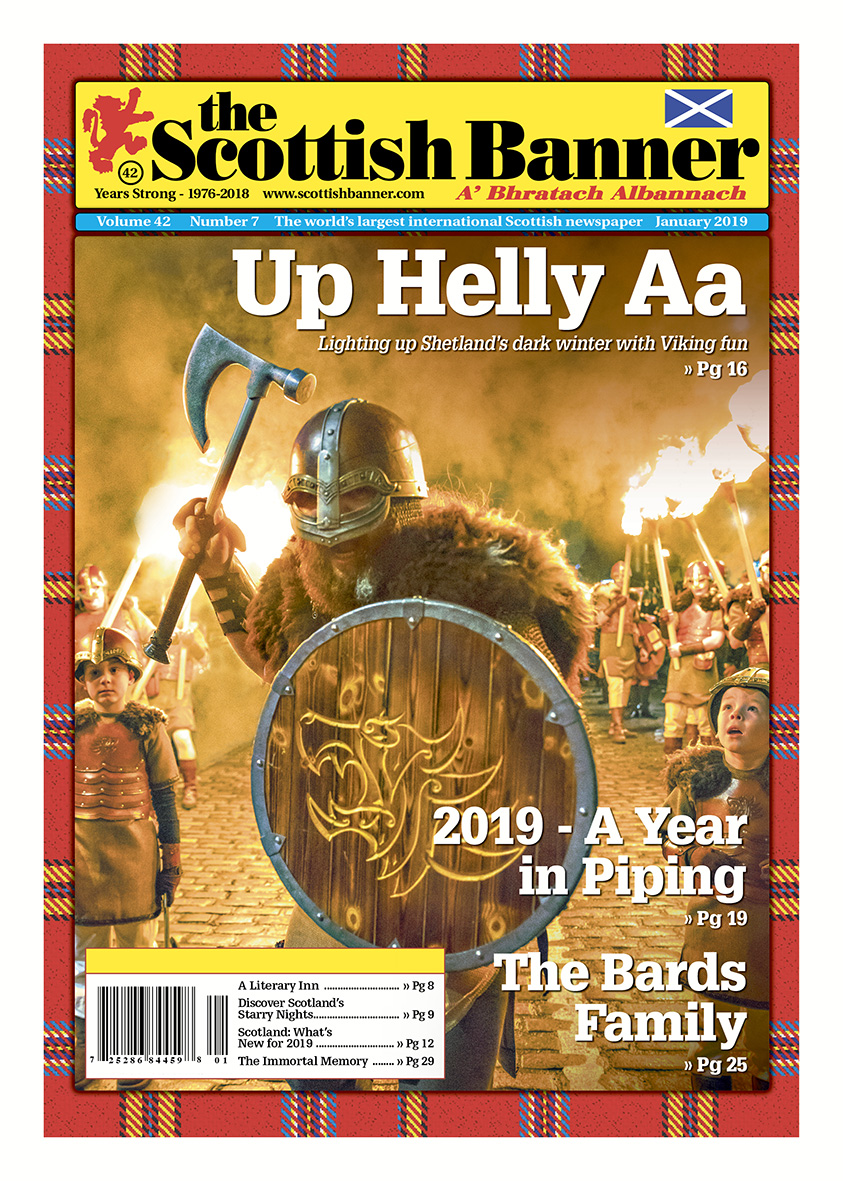
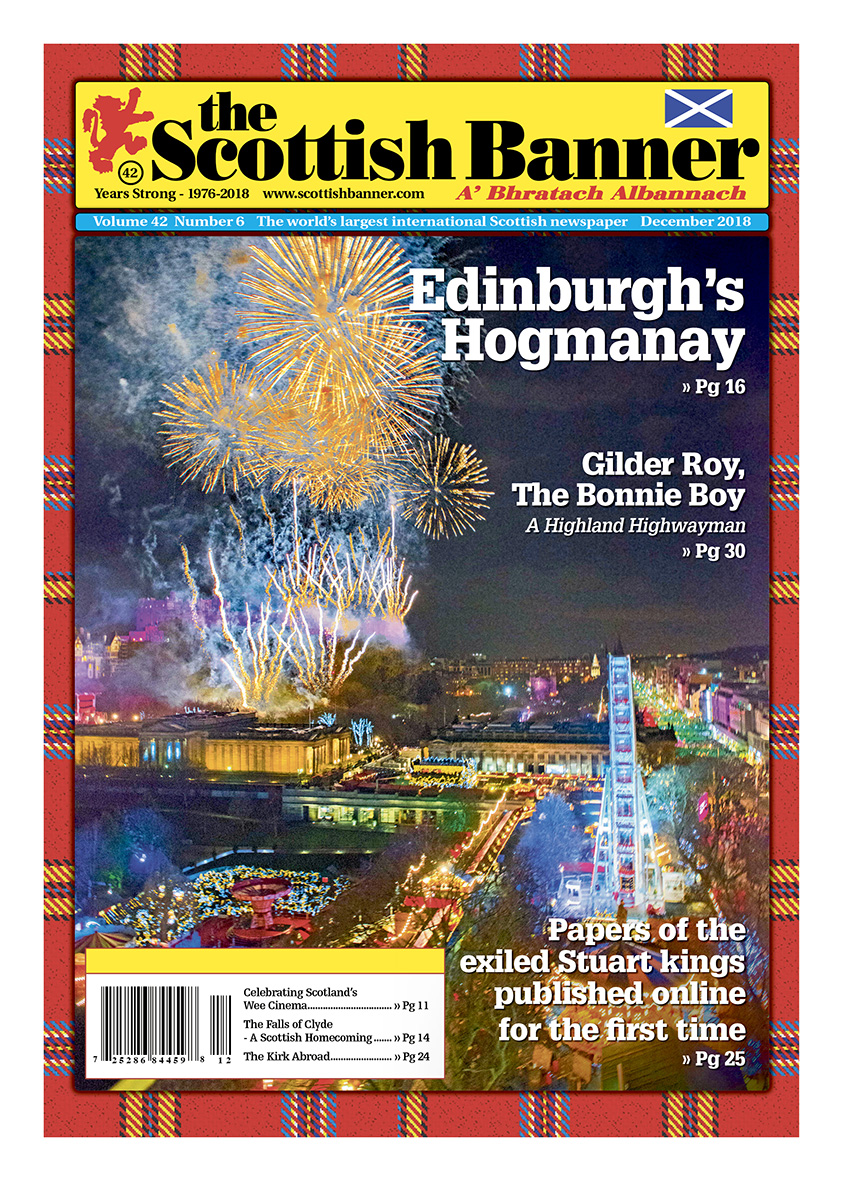
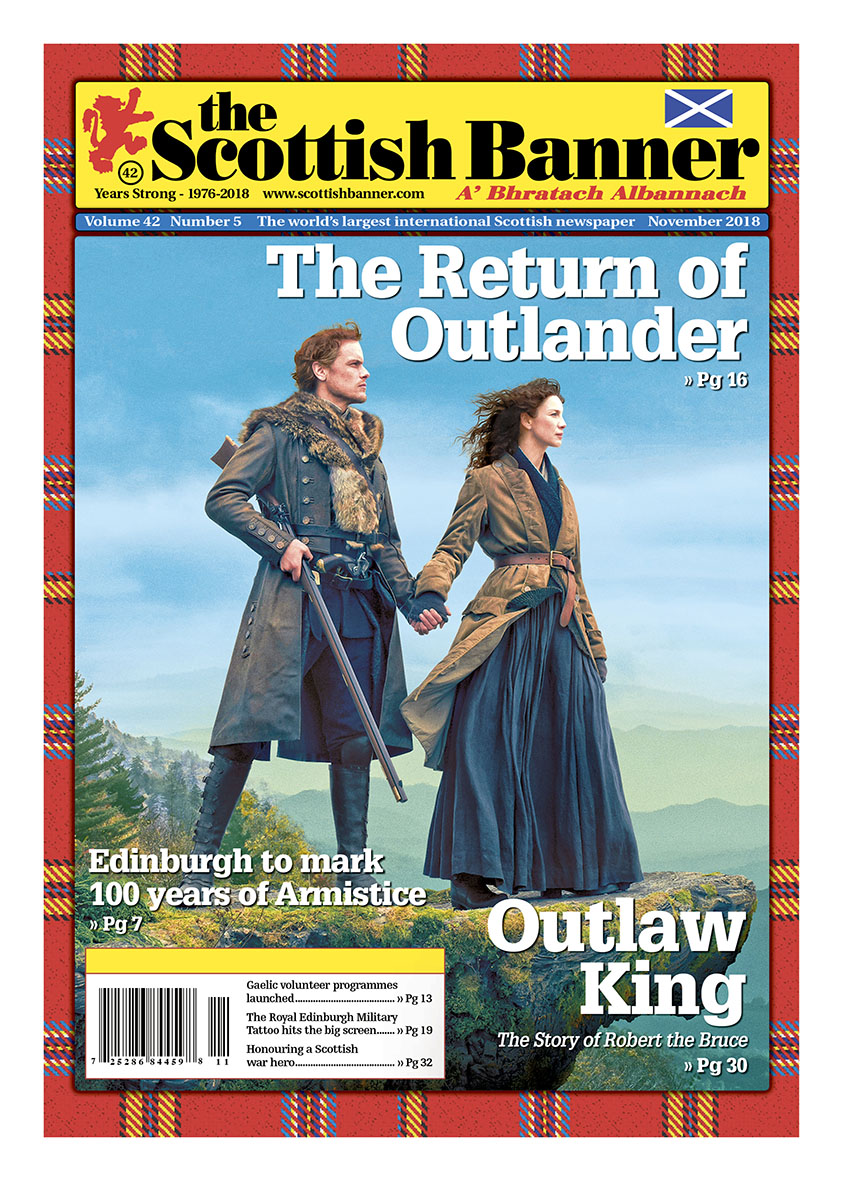
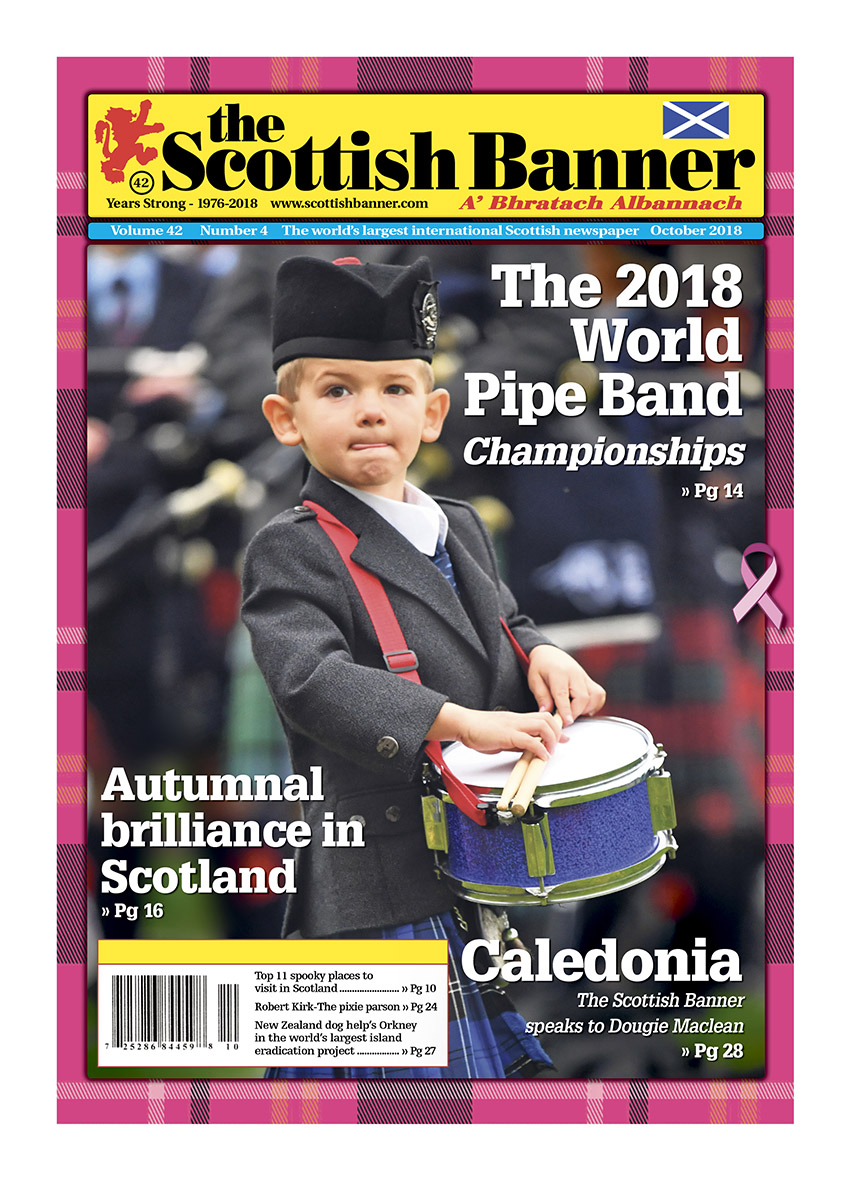

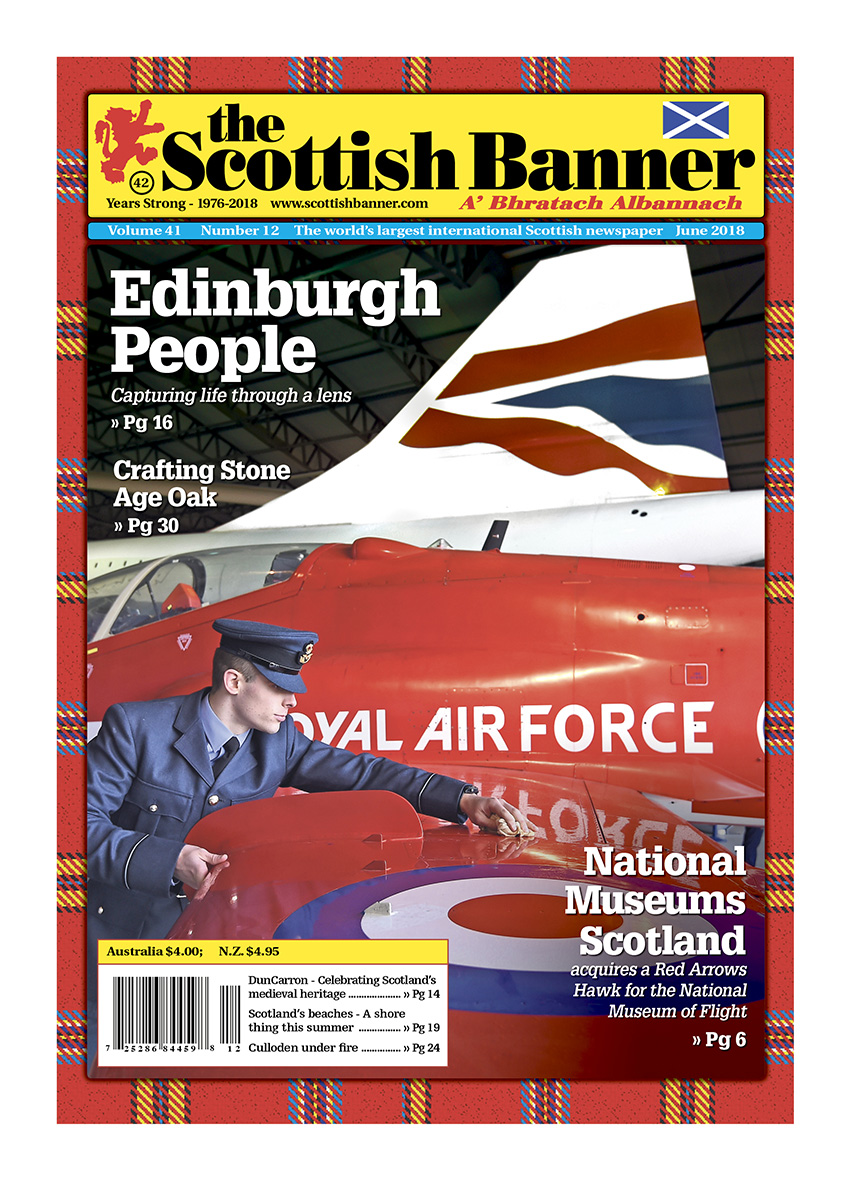
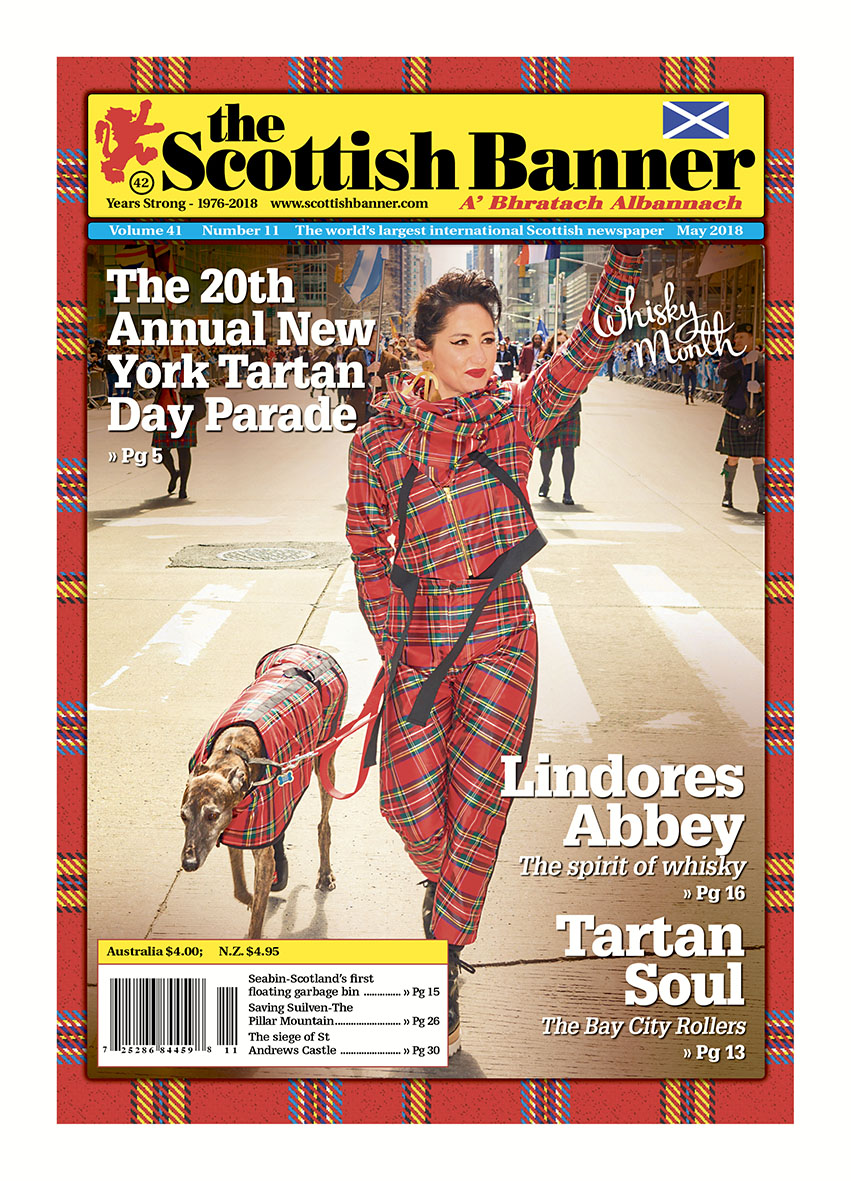
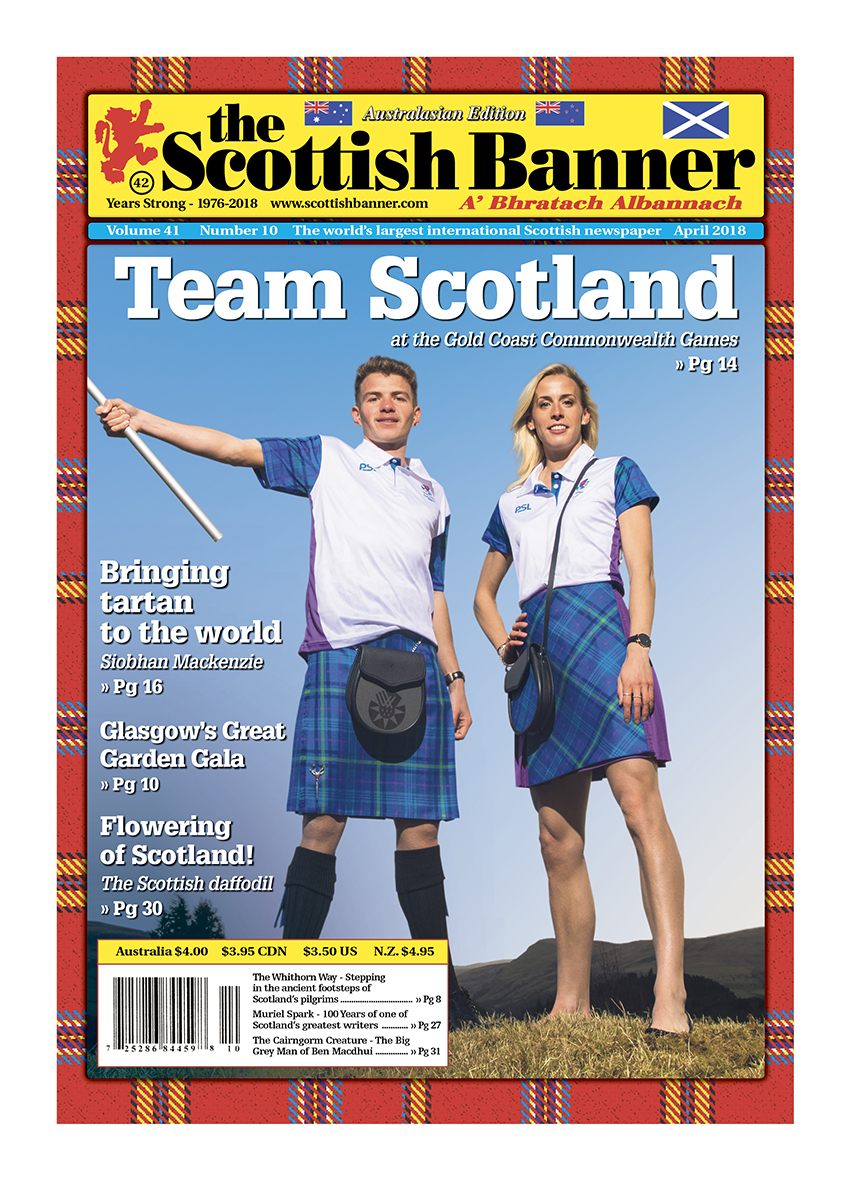
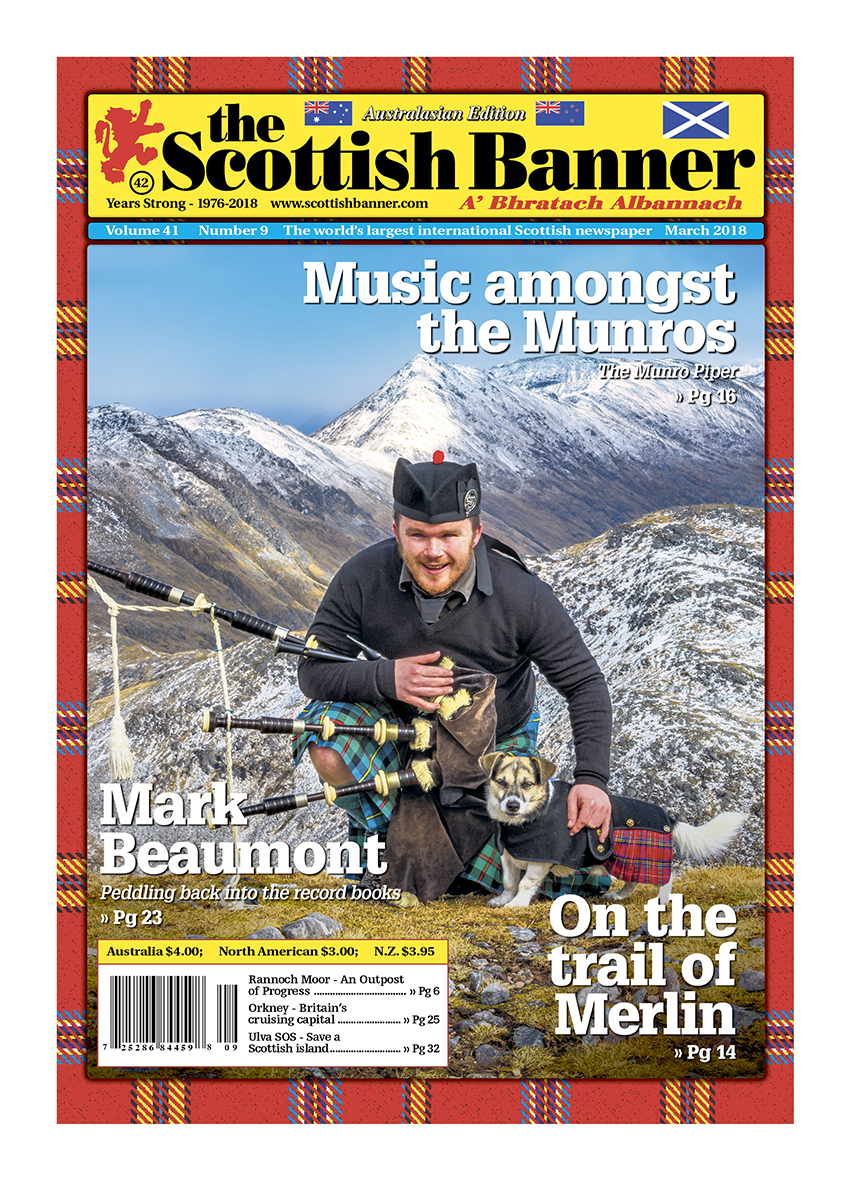
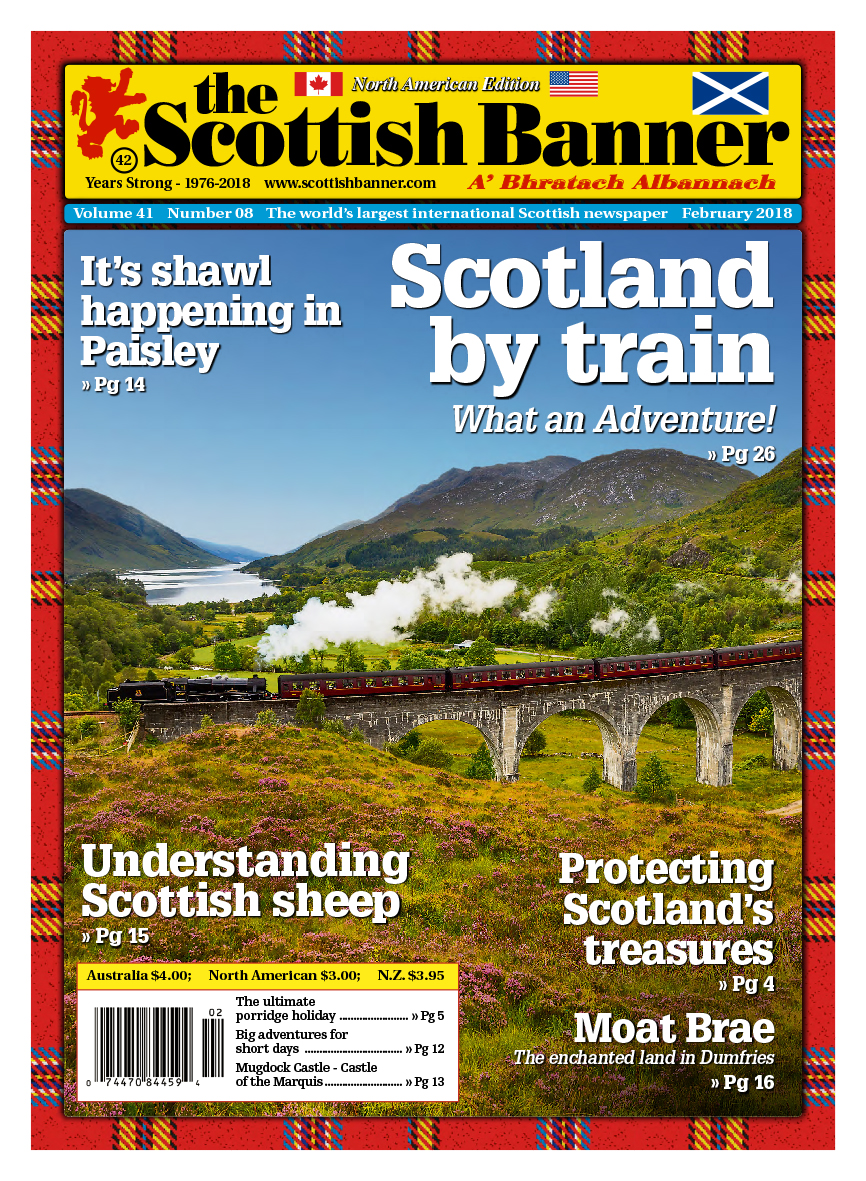
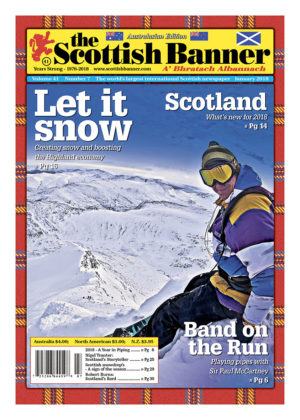
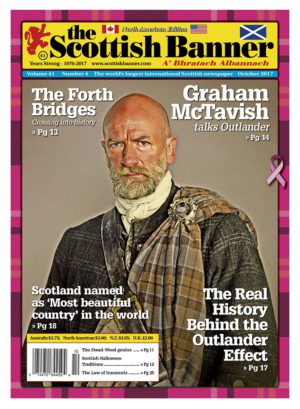


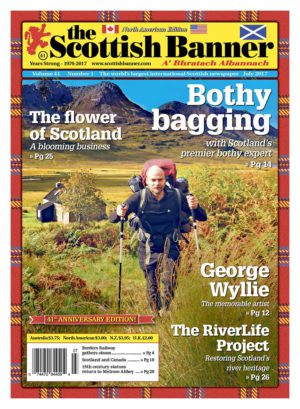
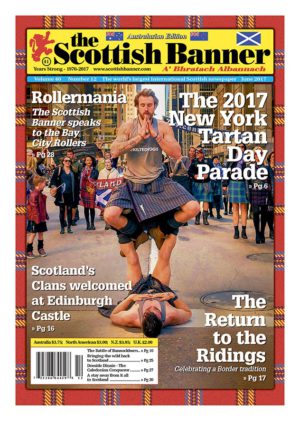
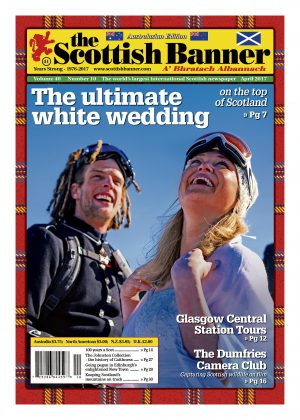

 February 2017 (Vol. 40, Number 08)
February 2017 (Vol. 40, Number 08)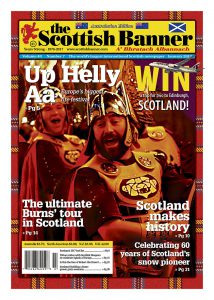 January 2017 (Vol. 40, Number 07)
January 2017 (Vol. 40, Number 07) December 2016 (Vol. 40, Number 06)
December 2016 (Vol. 40, Number 06) November 2016 (Vol. 40, Number 5)
November 2016 (Vol. 40, Number 5)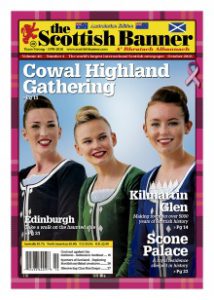 October 2016 (Vol. 40, Number 04)
October 2016 (Vol. 40, Number 04) September 2016 (Vol. 40, Number 03)
September 2016 (Vol. 40, Number 03)